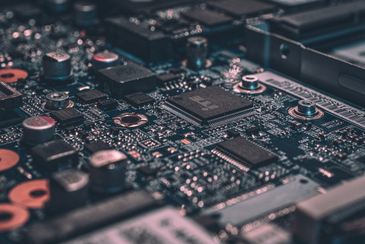New DFG project to manufacture computer chips
Over the next three years, the DFG will provide around 300,000 euros in funding for a project that will make it possible to manufacture computer chips that can simultaneously store and process data. The research project is headed by Professor Rolf Drechsler of the Computer Architecture Working Group (AGRA).
Processors are increasingly being used in devices ranging from notebooks to mobile phones, dictation machines and satellites. According to Drechsler, there is a lot of electronics in cars today. "A car in the luxury class contains more than 250 microprocessors with millions of lines of programming code. The problem is that the manufacture of computer processors is now reaching the physical limit. "Processors were first developed in the 1970s. At the time, Intel co-founder Gordon Moore predicted that twice as much would fit on a chip every 18 months. Meanwhile we are at ten nanometers and cannot build smaller at reasonable cost. We are at a turning point here," explains Professor Drechsler. The computer architecture has to move in a new direction.
Simultaneous storage and processing
One solution could be so-called Logic-In Memory Computing, says Drechsler. "What's new is that computers can simultaneously store and process data in their memory. This process is usually separate. The boundary between memory and calculation unit is thus removed. "This is to be seen as a revolution in the field of architecture, as it removes the separation that has been in place for decades."
The DFG project "HDL-based Synthesis and Verification for Programmable Logic-In Memory Architecture" deals specifically with the question of how such circuits can be rebuilt. "We're not building the chip, we're building the production line. To this end, Professor Drechsler and his team carry out computer simulations: "In the 1970s, the blueprint for the chips was still drawn on the board. Today's processors, on the other hand, consist of more than 10 billion components, as the computer scientist describes, that is 10 million 1000-piece puzzles. In order to construct the novel chips, scientists have to extend existing programming languages with new commands.
Powerful and energy-saving devices
In addition, the researchers have the claim to be able to carry out verification at the same time as production. "We don't just want to believe that the chip works, we want to prove it with formal methods. In this way, we can guarantee the correct and reliable functioning of the entire system." The aim of the new computer architecture is to develop high-performance devices that consume little energy. Thanks to their more compact design, they could also be used in a wide variety of places on the Internet of Things and designed to be more secure. This is very important nowadays, especially in view of hacker attacks.
Further information:
http://www.informatik.uni-bremen.de/agra/ger/bereich.php
Questions answered:
Prof. Dr. Rolf Drechsler
Computer Architecture Working Group
Department 3
Phone: +49 421 218 - 63932
E-Mail: drechsler[at]uni-bremen[dot]de

